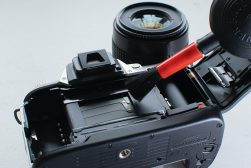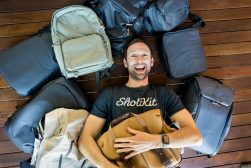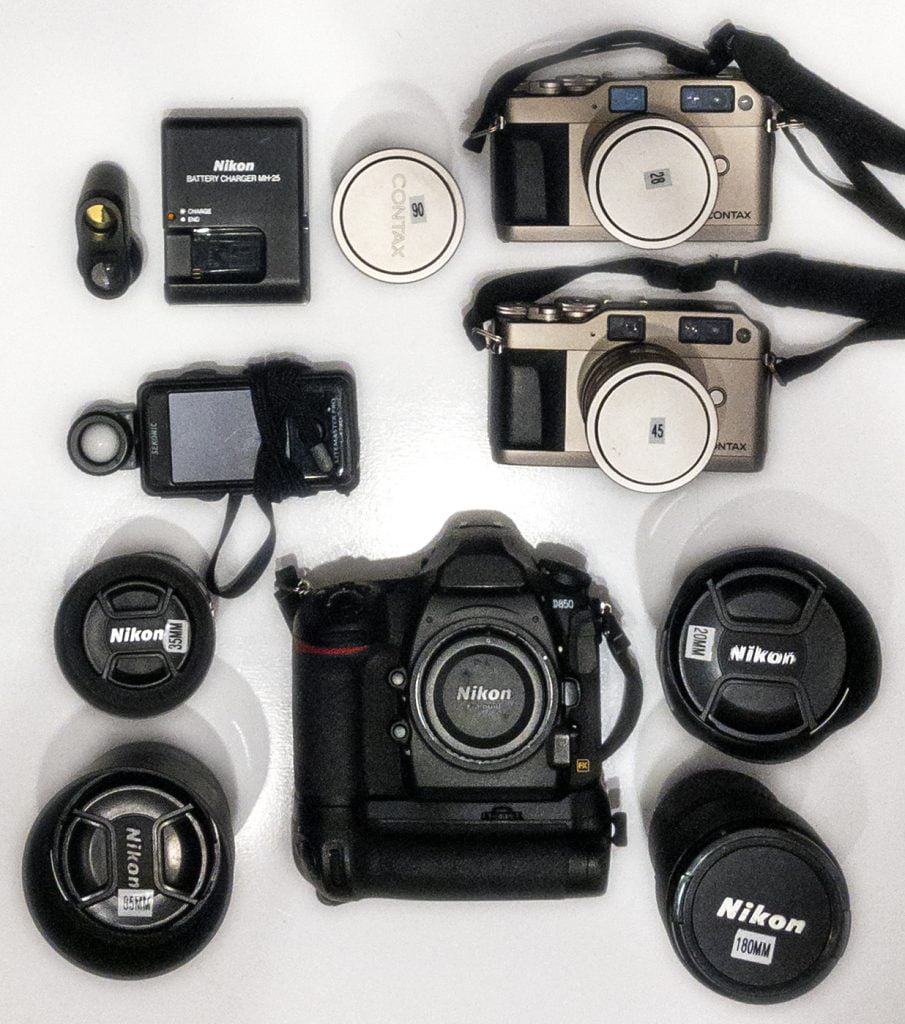
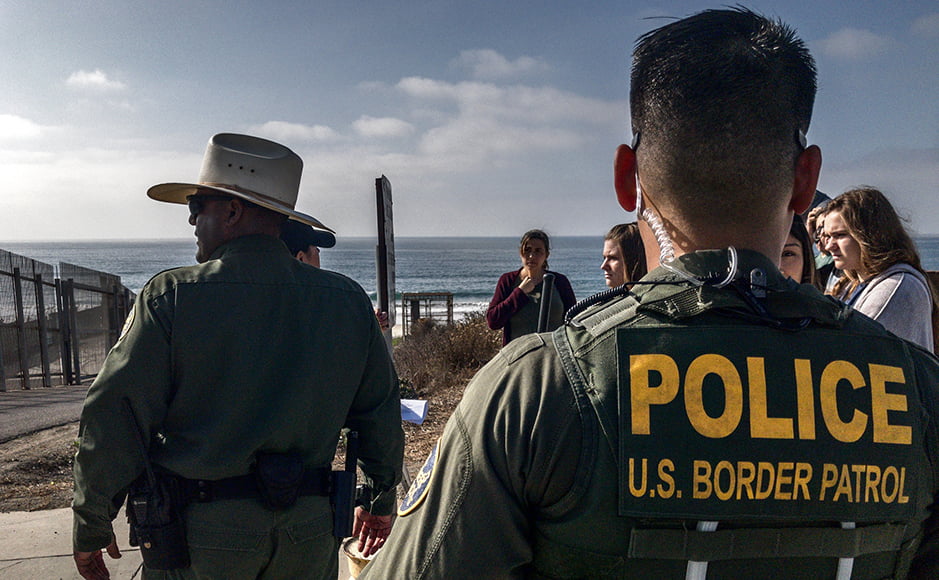






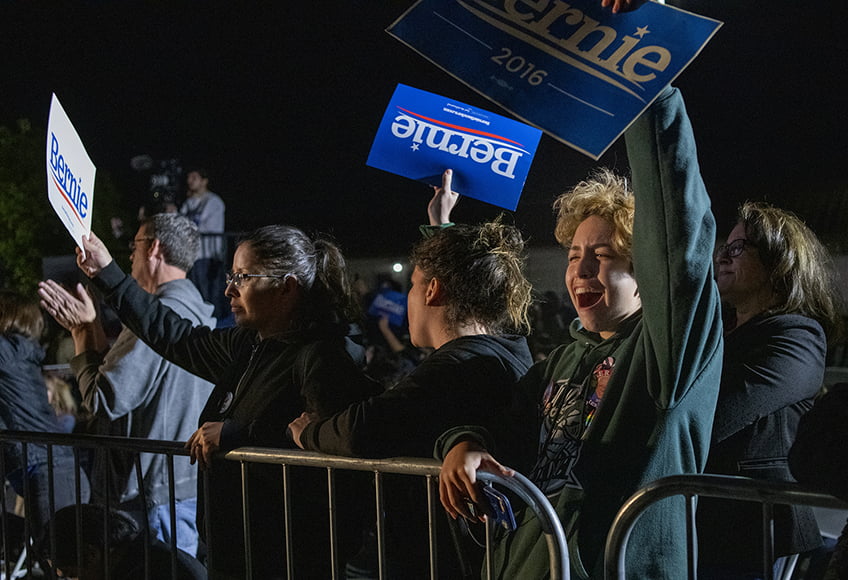
David Barak
Photojournalism | Last Updated: January 5, 2021
I’m a photojournalist in San Diego, California. In the past, I’ve worked on staff at newspapers in California and Florida, but now everything I do is freelance and my self-assigned work gets sent off to ZUMA Press for distribution.
My day to day work is done with a Nikon D850 and MB-D18 Battery Grip. I chose the Nikon D850 because of its high resolution, its overall image quality and because it can take decades worth of Nikon lenses.
I carry a Nikon 180mm f/2.8, a Nikon 35mm f/2, a Nikon 85mm f/1.8 and a Nikon 20mm f/1.8. Most of what I shoot is done using the 85mm and 20mm, and of those two I generally turn to the 20mm. I went with all prime lenses, no zooms, for one, uh… well, one primary reason.
Years ago I switched from multiple prime lenses (too many, to be honest) to two zooms, and I found my photos suffered because I got lazy and just zoomed in or out. They say to zoom with your feet and since going back to primes my photography has gotten better.
I have an inexpensive Nikkor zoom – I can’t remember what focal length range – that I keep at home as an emergency backup. All my lenses are protected with UV/haze filters and lens hoods.
I carry three batteries for the camera along with a charger. I have a battery insert for AA Batteries but since the three regular batteries I’ve got get me through a day, I don’t carry this with me. I have a couple of spare rear lens caps in my bag, something I’ve done after I lost one. I hate putting a lens away even for a few minutes without caps on.
I lug this stuff around in a Domke F-2 Bag, something I was used to from my newspaper days, and low key. I carry four SD cards – I can get hundreds of shots on a single card and I’ve never needed more than two cards even on the busiest days. I carry a press pass from the San Diego Police Department but I’ve never really needed it.
Also on-hand but typically not part of the daily stuff I carry around (and not in the photo) are a Nikon 105mm Macro, a Nikon 300mm f/2.8 and a Nikon 500mm f/4. I’ve got a Godox flash that I stopped carrying because I never used it.
I have the usual doodads – a monopod, notepads, pens and pencils, lens cleaning pen and a remote cable (never needed so far). I’ve got an ancient Bogen tripod that I haven’t used in years.
There are two Contax G1 film cameras in the photo, only used for stories where I need to be a fly on the wall and don’t need the advantages of digital. I have my own darkroom so a lot of the film that goes through these is black and white.
One has a Zeiss 45mm f/2.0 lens on it, the other a Zeiss Biogon 28mm f/2.8, and I carry a 90mm/f2.8 Zeiss Sonnar. I also have a Sekonic L-478D Meter and spot attachment with these.
I’ve got a hard case for my MacBook Air, assorted cables, a small hard drive and a HooToo USB-C dongle/adapter/doohickey that lets me read SD cards (no slot on the MacBook Air), has an Ethernet port (for when I’m in a place with no or poor public Wi-Fi but still have the option for a hard-wired connection) and USB ports – the HooToo turns a single USB-C port on the laptop into eight different ports and slots.
I bring along a power bar or two to snack on and a bottle of water. On days that I think will be long and/or hot, I carry up to four bottles of water in two Domke pouches that I keep on a belt. This is also the belt where I keep the goggles and respirator (in a third pouch) I hope to never need in a riot situation. These days it’s been close, very close…
I also have a bag in my truck that has a second-hand firefighter’s turnout coat. I also have a smoke mask, firefighter’s goggles, boots, heavy gloves and an armband that says ‘media’ since I don’t want anyone thinking I’m trying to pass myself off as a firefighter. This is all for covering wildfires, and thankfully so far I haven’t needed them.
These days I carry N95 masks and nitrile gloves, although I’m not too worried about coronavirus transmission by hand and so haven’t used the gloves. I carry a fairly thick trash bag – you just never know when it might come in handy – and I bring along business cards.
I keep spray-on sunscreen in my truck, and it’s got a locking cap so if I think I’ll need it while I’m actually out shooting, I can carry it without worrying about spraying it all over my equipment.
If it’s possible to be a digital Luddite, I’m one. I only use Photoshop – I’ve never liked Lightroom or Photo Mechanic. I review my JPGs in the standard Mac Preview software, tag the photos in their folders – still on the SD cards – then get to work on the RAW files.
I save toned and captioned but un-cropped Photoshop PSD files onto the SD card. Then I crop the PSD files as I like, save them as PSD files with a different name, then I save copies as JPG files and send them off to where they’re going.
Once that’s all done I copy everything over to a RAID Drive and initiate a double online backup using Backblaze and Amazon Glacier. Then I grit my teeth and reformat the SD cards. The batteries go back in the chargers and a card with ‘Batteries, dummy!’ written on it goes on top of the gear in my bag – I don’t ever want to forget my batteries and this is how I prevent that from happening.
A note on cleaning – for lenses, I typically brush stuff off and then use a lens pen to get rid of smudges. For more stubborn cleaning I use isopropyl alcohol (either 93% or 97%, I can’t remember) – only a little! – and a cotton swab – NOT synthetic. Synthetic swabs can scratch, from what I’ve heard, but cotton is gentler. I’ve got a big bag of them that should last a lifetime.
For the interior of the camera itself I have a routine I follow:
- I use the electronic sensor cleaning feature first, keeping the camera mount facing down so gravity helps get rid of dust. All cleaning is done with the lens mount facing down.
- Sometimes I fire off a dozen or so frames with no lens to jar dust loose.
- I lock the mirror up and use a rocket air bulb to blow dust away. I don’t use canned air – too much pressure and I have no idea what chemicals are in it.
- I have a neat little Fujin vacuum device that attaches like a lens. I attach that, start the vacuum and then use the mirror lock-up feature on the camera to expose the sensor. As the vacuum is working, I fire off a few frames and jiggle the camera a little.
Since I began this routine I haven’t had to do any deep cleaning of the sensor. Doing that scares the @#$! out of me. I’ve done it using the wet swab method and one of those sticky lollipop things, which I DO NOT recommend. I’ve never had to bring it into a shop for cleaning.
When I’m shooting I’m changing lenses fairly often and even with that I don’t have a real dust problem as long as I follow my cleaning routine.
www.davidbarak.com | @dave_barak

Check out these 8 essential tools to help you succeed as a professional photographer.
Includes limited-time discounts.





